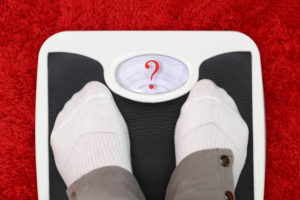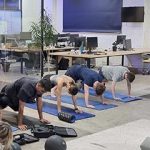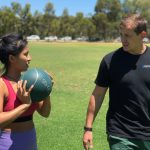Today more than ever there is so much information out there about the best way to reach your health and fitness goals. Some of this information is aiming at a do ‘minimal and get great results’ market, you know the headlines ‘get chiseled abs with just 7 minutes a day’ , ‘the ten minute workout that will change your life’, the list goes on. Is there anything wrong with this? If you do ten minutes of exercise a day surely that’s better than doing nothing?
To that I say, doing exercise is almost always a good thing. There are so many benefits to exercising, outside of ‘building muscle’, ‘losing weight’ ‘toning’. What you can’t physically see is the numerous benefits to your cardiovascular system, the strengthening and maintained health of your joints, the endorphins that are released that help to lower stress levels and help you concentrate. The benefits of exercise are huge!
But back to ‘Why the Why Matters’. When it comes to functional exercise it is important to understand the body is designed to move in a very specific way and for the body to feel fit, strong and healthy we should aim to have it moving the best we can. This is the ‘Why’ that can often be missed in ‘blanket exercise programs’. Over simplifying exercise programs has some serious downfalls when it comes to functional movement. Whilst they might be perfectly fine for some people, for others, depending on how their body is functioning, this simply will not be the right path to go down initially. Examples of oversimplifying exercise programs are everywhere, take what I saw on the morning news today as an example: ‘Deskercise’ in other words exercises you can do in your office. Some of the exercises the presenter demonstrated were perfectly fine exercises to do if your body is moving well such as squats and dips. However the exercise I ask you to question is the exercise the presenter showed us you ‘can do in your chair’. The exercise was holding onto the side of the chair and bracing your core (to this point, I have no issue with the exercise), the next step (and the issues begin) was to bring your knees up to your chest, extend your legs out and repeat. I am about to throw in some technical jargon now, so if that’s not your thing skip the next paragraph and just take my word for it in most cases, this exercise isn’t a good idea.
Bringing our knees up to our chest from this position is called hip flexion. There are a number of muscle that flex your hips but two of the major muscles are the ‘psoas major’ and ‘illiacus’ together known as the ‘illiopsoas’. These muscle are already usually very strong in people that sit down, because when you are sitting you are already in hip flexion and these muscles are shortened and working hard to hold you in this position. The opposite of these muscles are the ‘glutes’ or butt muscles and when sitting down these muscles lengthen which, can cause them to be weak. Strong butt muscles are important for so many reasons, and I will touch on that another day. On the contrary weak glutes can cause a number of issues, but the biggest and most common one by far is lower back pain (We will look at Why that is another day!).
To put it simply, the exercise they have shown you to do, strengthens a muscle that is already likely to be strong and does next to nothing to strengthen a muscle that is more than likely ‘less active’ and ‘weaker’ than it should be. If you are sitting down for most of the day you are almost always going to get more benefits from a functional point of view by doing leg/hip extension exercises (again more to come on this topic, or just google it ????
This ‘deskercise’ is one of a plethora of examples I could give you for doing exercises that make no sense when it comes to giving your body the best chance of moving the way it should move. If our body is moving correctly and functionally then 98% of the time it is going to be moving pain free. This is one example of ‘Why, the Why matters’ . If you are looking for training where the ‘Why’ is the pinnacle of everything we do, check out functionalforlife.com.au
Warning: The training and instructional content contained on this website should be taken as information and not medical advice. Please consult your health professional before attempting these exercises.






